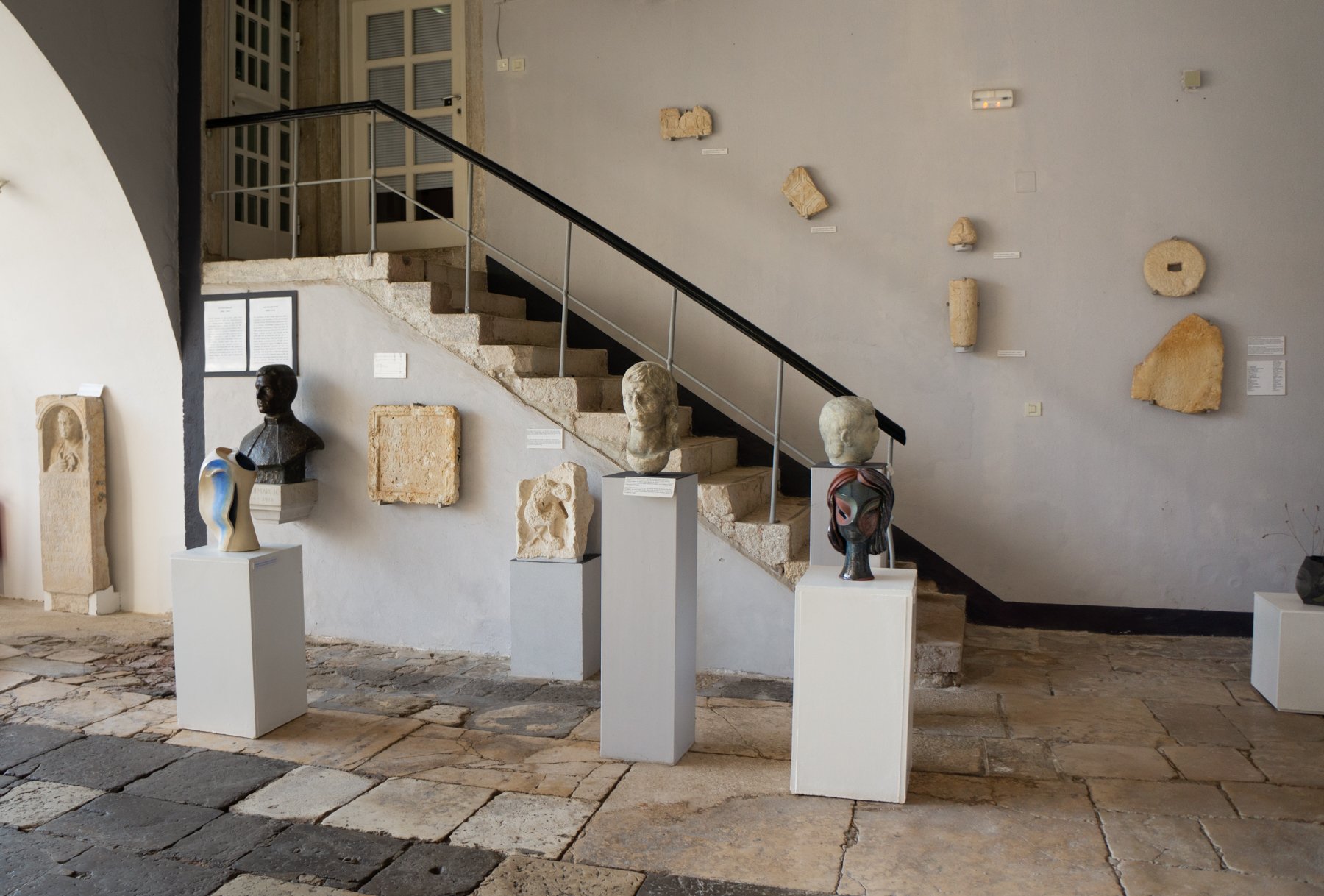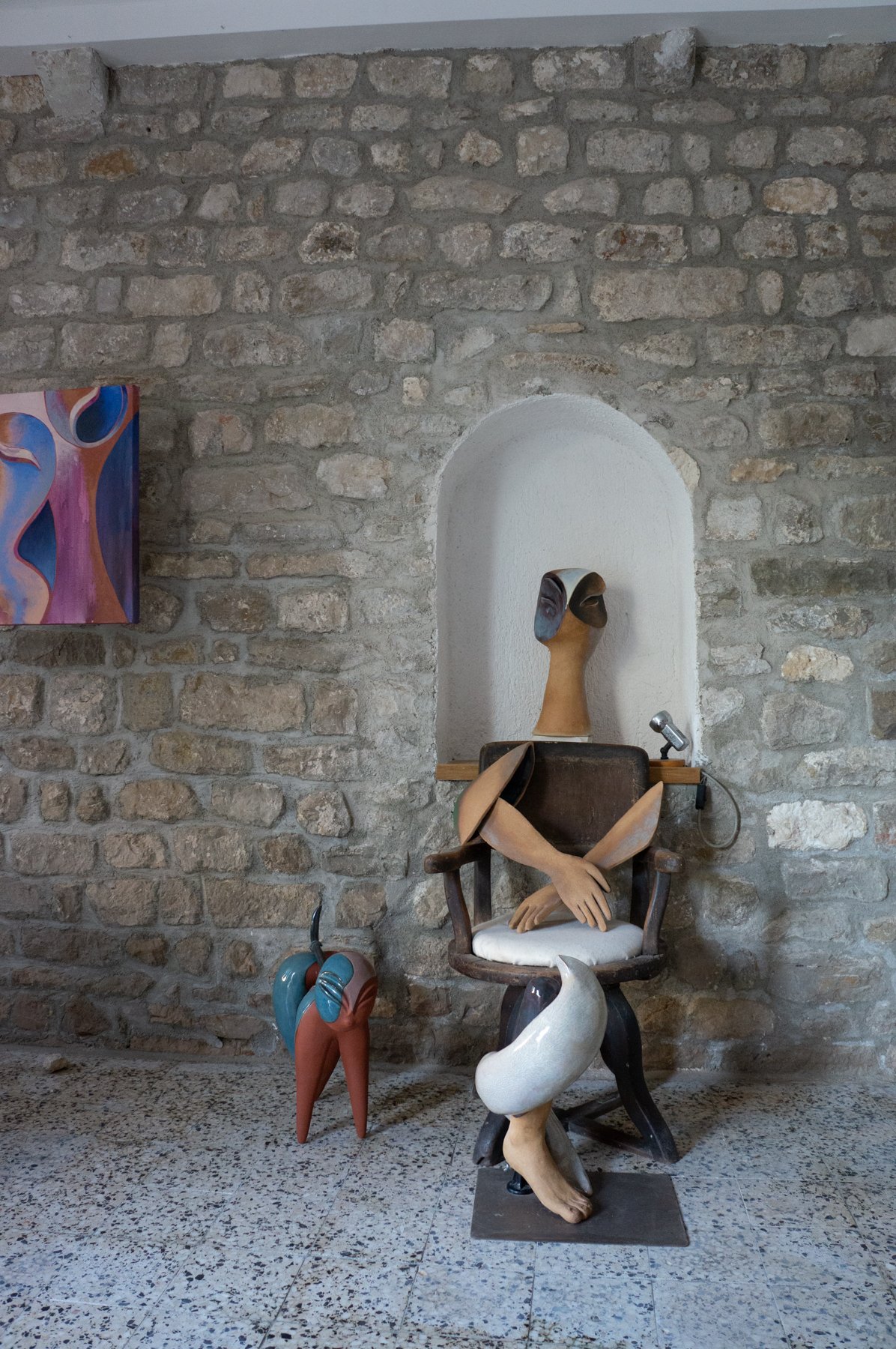White gulp ~ Blue gulp
Lošinj Museum, Archeological Collection of Osor, 2021.
text by Marijana Dlačić
White gulp, Blue gulp. A gulp of water, a breath of air. Expiration. A sigh of relief. Groan. Cry. A whole life stuck in one’s throat.
The body a the manifestation of being and the materialization of contingency .
Marika Kandelaki's bodies are fragmented: the heads are bent, the faces are reduced to the lines of the eyes and nose, the limbs are sometimes assembled and sometimes disassembled, but always interdependent. It is a metaphorical body: as a whole it is read like rationality that gives reason and meaning to everything, puts it in order and brings peace; the broken body is a metaphor of the unconscious which, with its hidden messages, feelings and dreams, brings restlessness into reality by adapting it to one's own desires and hopes. In the interaction of the conscious and the unconscious, the rational and the sensitive, a new world emerges in which space and time are not unambiguous. Space is fluid, it knows no physical limits and laws of matter. Time is infinite - in the present the past and the future meet, and the moment is a set of past assignments and future possibilities. In this paradox of infinite moment and fluid space live the humanoid figures of Marika's sculptures and paintings. These can be beings from outer space. Or from the human imagination. Mythological beings, goddesses and ghosts; or mental states. Fragmentation. Multiplicity of personality. Aren’t we all made up of different public and private roles, with that personal and intimate self bent between an unspeakable and inexpressible unconscious?
This dichotomy is also evident in the exhibition set-up itself, which is displayed in two separate spaces: the Archaeological Collection in Osor and the hall of the Association of St. Gaudentius. The sculptures exhibited in one room find their pair in paintings set in another room. By crossing the square from one room to another, the exhibition visitor simultaneously participates in their dialogue. They are the transmitters of the message, and the space of the square becomes that fluid space in which the creation of the new world takes place. Osor, a sleepy town with roots in a deep, mythological past, becomes a time capsule in which spaces and times merge into a unique universe that the visitor creates by engaging with the exhibited works. Each of these worlds are unique and populated by a singular creator. In that world, loneliness is the only constant, and alienness is the goal. The alienness as a consequence of self-sufficiency and self-indulgence, an expression of absolute and independent essence.
For Marika Kandelaki, born in Tbilisi (Georgia), who spent most of her life in New York and moved to Mali Lošinj just before the coronavirus pandemic, alienness is a deep-rooted notion, but also a process of self-awareness that she documents with her works. The island, as always, proved to be at its best and at its worst




























